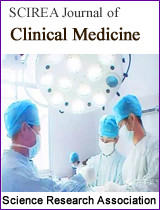Relationship between Knowledge about Antibiotics and Behavior in the Use of Antibiotics in University Students
DOI: 10.54647/cm321283 53 Downloads 13012 Views
Author(s)
Abstract
Background: Antibiotics are the type of antimicrobials that have been used to treat bacterial infection in the body. The knowledge about antibiotics can influence antibiotic use. In Indonesia, many studies have contradictory results regarding the relationship between antibiotic knowledge and attitude toward antibiotic use. Therefore, this study aims to know about the level of knowledge and attitude regarding antibiotic use in medical students and other students and to determine the relationship between knowledge about antibiotics and attitude toward antibiotic use. Aim: To determine the relationship between knowledge about antibiotics and attitude regarding antibiotic use in the medical students class of 2020 UPH. Methodology: This analytic cross-sectional study was conducted in January 2023. The questionnaires were distributed through social media to 177 students at UPH. The submitted data was arranged in Microsoft Excel and analyzed with SPSS Statistics using Chi-Square, Fisher's Exact, and Binary Logistic methods. Result: Of a total of 183respondentst, there are 102 (55,6%respondentsnt who have a good knowledge of antibiotics, and 101 (55,2%) respondents who possess a good attitude in using antibiotics. Conclusion: The result denoted a significant correlation between knowledge and attitude regarding antibiotic use in medical students class of 2020 UPH (p= 0,0001 in the chi-square method and p= 0,016 in Fisher's Exact; 95% CI = 1,87- 54,03).
Keywords
knowledge, behavior, antibiotics use, university students
Cite this paper
Tirta Darmawan Susanto, Trevino Aristarkus Pakasi, Dewanto Andoko, Tiara Julianti, Naftali Intania Kristianti,
Relationship between Knowledge about Antibiotics and Behavior in the Use of Antibiotics in University Students
, SCIREA Journal of Clinical Medicine.
Volume 9, Issue 3, June 2024 | PP. 74-90.
10.54647/cm321283
References
| [ 1 ] | "What are antibiotics and how do they work?," Microbiology Society. Available: https://microbiologysociety.org/membership/membership-resources/outreach-resources/antibiotics-unearthed/antibiotics-and-antibiotic-resistance/what-are-antibiotics-and-how-do-they-work.html |
| [ 2 ] | E. Y. Klein, T. P. van Boeckel, E. M. Martinez, S. Pant, S. Gandra, S. A. Levin, et al., "Global increase and geographic convergence in antibiotic consumption between 2000 and 2015," Proc. Natl. Acad. Sci. U. S. A., vol. 115, no. 15, pp. E3463–E3470, Apr. 2018, doi:10.1073/pnas.1717295115. |
| [ 3 ] | World Health Organization, "Antimicrobial resistance." Available: https://www.who.int/news-room/fact-sheets/detail/antimicrobial-resistance |
| [ 4 ] | C. J. Murray, K. S. Ikuta, F. Sharara, L. Swetschinski, G. Robles Aguilar, A. Gray, et al., "Global burden of bacterial antimicrobial resistance in 2019: a systematic analysis," The Lancet, vol. 399, no. 10325, pp. 629–655, Feb. 2022. Available: http://www.thelancet.com/article/S0140673621027240/fulltext |
| [ 5 ] | Indonesia: National action plan on antimicrobial resistance Indonesia 2017-2019. Available: https://www.who.int/publications/m/item/indonesia-national-action-plan-on-antimicrobial-resistance-indonesia-2017-2019 |
| [ 6 ] | A. I. Pratiwi, W. I. Wiyono, and I. Jayanto, "Pengetahuan dan penggunaan antibiotik secara swamedikasi pada masyarakat Kota," Jurnal Biomedik: JBM, vol. 12, no. 3, p. 176, Dec. 2020. |
| [ 7 ] | A. Wulandari and C. Y. Rahmawardany, "Perilaku penggunaan antibiotik di masyarakat," 2022, vol. 15, no. 1. |
| [ 8 ] | H. M. O. Sianturi, "Hubungan tingkat pengetahuan tentang antibiotik dengan sikap dan tindakan penggunaan antibiotik tanpa resep pada mahasiswa/i Universitas HKBP Nommensen Medan," 2019. |
| [ 9 ] | D. Ashiru-Oredope, S. Hopkins, S. Vasandani, E. Umoh, O. Oloyede, A. Nilsson, et al., "Healthcare workers' knowledge, attitudes and behaviours with respect to antibiotics, antibiotic use and antibiotic resistance across 30 EU/EEA countries in 2019," Eurosurveillance, vol. 26, no. 12, p. 1, Mar. 2021. |

